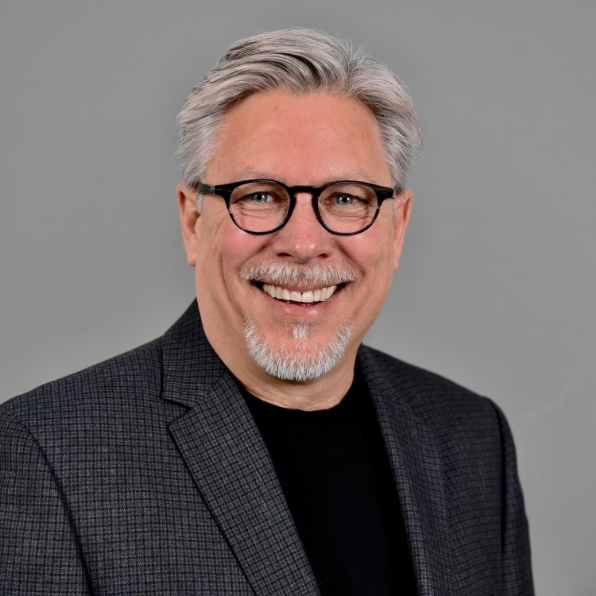
- This event has passed.
Career Story with Scott Leischow, Ph.D.
June 10, 2020 @ 1:00 pm - 2:00 pm

Developing a Career Direction…Watching, Wondering, and Pursuing a Personal Path….
While at the University of Maryland working to explore whether techniques like biofeedback and breathing exercises could reduce stress as measured by various psychophysiological methods, I decided to submit an abstract of my work to the Society for Behavioral Medicine – and it was accepted as a poster. This was my first research presentation, and it turned out to be a fortuitous experience because one of the scientists who chatted with me was Steve Weiss, then chief of the Behavioral Medicine Branch at NHLBI/NIH. Steve mentioned in passing that they had a grad assistant position, and when I returned I applied and eventually got that position. For two years I had the great opportunity to learn from and interact with the luminaries in Behavioral Medicine, and toward the end of my stint there, and close to the completion of my doctorate, Steve strongly encouraged me to do a post-doctoral fellowship. I took his advice and was accepted into a fellowship at Johns Hopkins University, but to study smoking cessation not stress. So, for 2 years the whole focus of my work changed, and I again had wonderful opportunities to interact with national leaders in a field that was very new to me.
Upon completion of the post-doctoral fellowship, I was torn…should I focus on jobs that were oriented toward stress and stress management or smoking cessation. I had submitted a new investigator grant application to NIDA during my fellowship to conduct smoking cessation research, and learning that I would be funded at the end of my fellowship sealed the deal. I would now become a smoking cessation researcher. As a former smoker, I was very happy to pursue this line of research, and my interactions with leaders in the field during my postdoc and afterward created valuable new opportunities to develop as a tobacco control scientist. Most importantly, it gave me the opportunity to develop collaborations that allowed me to received additional funding by NIH, eg to study switching smoking cessation medications from prescription to over-the-counter, as well as funding by pharmaceutical companies to test the safety and efficacy of potential new medications for smoking cessation. In addition, it allowed me to work with our state health department, and we were able to establish the Arizona Smokers Helpline, which was the 3rd state quitline in the US.
During this time, I was able to become a tenured Assistant Professor at the University of Arizona, and while there was recruited to apply for the position of branch chief of the Tobacco Control Research Branch at NCI. Was I capable of becoming a branch chief like Steve, who was so influential to my career? Well, I applied, and eventually was offered the position. The next question was: do I want to give up tenure for that job? I took the position, and it was one of the best decisions I have ever made. While there, I was able to actively become involved in the development of the national smoking cessation quitline network and several other national initiatives – and even spent more than a year working in the Office of the Secretary of Health and Human Services. It was an incredible experience working in a place where science directly meets policy.
But the call of academia was stronger than public service, and I returned to Arizona, and it is likely that here I shall stay. Now as re-tenured full professor, I have had the wonderful opportunity to play leadership roles at the Arizona State University, where I am now, and Mayo Clinic Arizona, where I was before I came to ASU. In each environment I have continued my research exploring various topics related to tobacco control, including new smoking cessation methods, exploring the role of social networks in understanding dissemination and implementation of evidence-based tobacco control approaches, and analysis of social media to better understand why people use e-cigarettes.
Now that the end of my career is more clearly in sight, I am reminded of the many factors that have allowed me to ‘work’ in a way that usually did not seem like work: pursuing topics that I truly care about; collaborating with wonderful colleagues who made going into the office both highly productive and enjoyable; staying open to new ideas and approaches that have the potential to lead one in very new directions (ie, cultivating greater tolerance for ambiguity, and capitalizing on it); taking calculated risks that meant giving up something (eg, tenure) for a new opportunity; working hard but remembering that there is much more to life than work; and striving to remember daily that despite the challenges all around us there is always something joyful in the world that can lead to a smile or a heartfelt laugh. My hope is that the junior faculty coming along behind me will likewise find joy and both personal and professional success in the circuitous path that we call ‘a job’.
Details
- Date:
- June 10, 2020
- Time:
-
1:00 pm - 2:00 pm
- Event Category:
- Previous Career Stories
Organizer
- CRoFT
- WNY_CRoFT@urmc.rochester.edu
Venue
- Zoom Meeting: Registration Required
- View Venue Website

